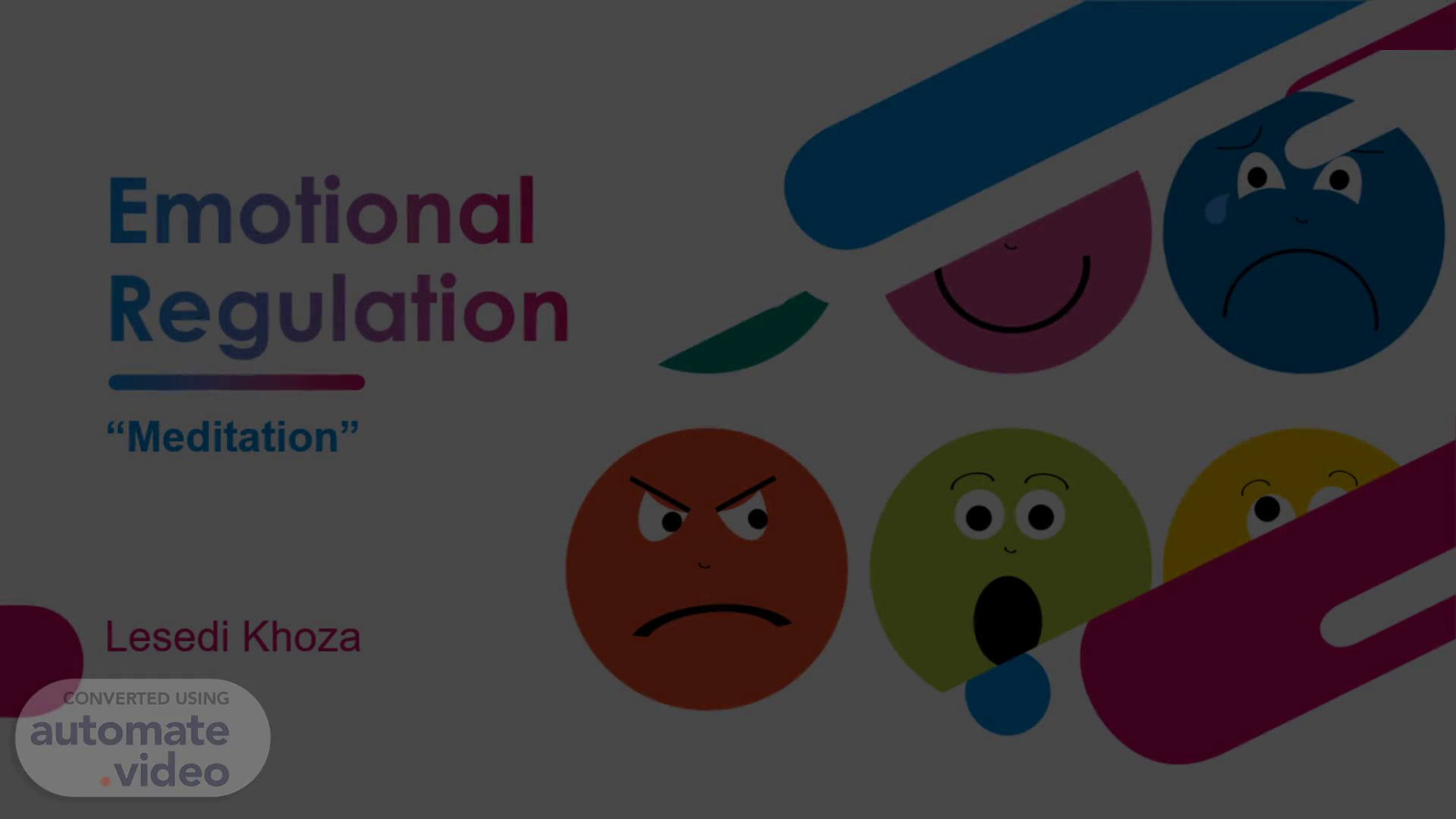
Emotional Regulation
Scene 1 (0s)
[Audio] In this video I will be explaining an emotional regulation technique that I really like. Meditation.
Scene 2 (8s)
[Audio] Before I give you steps on how you can use meditation as an emotional regulation strategy, you need to understand what emotional regulation is . Emotional regulation is like having an inner compass for handling our feelings. It's about knowing when we're upset, understanding and why, and then finding ways to manage those emotions without them taking over..
Scene 3 (34s)
[Audio] Here are 7 steps to emotional regulation. Prepare Your Space: Find a quiet, comfortable spot where you won't be disturbed. Focus on Breathing: Close your eyes and concentrate on your breathing, inhaling and exhaling deeply. Identify Emotions: Notice any emotions that arise without judgment, giving them a name. Acceptance: Embrace your emotions without trying to change them, acknowledging their validity. Regulate with Breathing: Use slow, deep breaths to calm overwhelming emotions, focusing on exhaling. Gratitude: Take a moment to appreciate the experience and insights gained. Set Intention: Before finishing, set an intention for how you'll carry emotional regulation forward in your day..
Scene 4 (1m 26s)
[Audio] Meditating has many benefits; however I have listed the top 10 benefits. Reduced stress and anxiety levels. Improved focus and concentration. Enhanced emotional well-being and regulation. Better sleep quality and patterns. Increased self-awareness and mindfulness. Strengthened resilience and coping mechanisms. Boosted immune system function. Decreased symptoms of depression. Improved decision-making and problem-solving skills. Enhanced overall sense of peace and contentment..
Scene 5 (2m 1s)
[Audio] Here is a list of things you might struggle with while meditating. Restlessness: Difficulty sitting still and staying focused. Monkey Mind: Racing thoughts that are hard to calm. Physical Discomfort: Bodily sensations like pain or stiffness. Impatience: Wanting immediate results and feeling frustrated. Drowsiness: Struggling to stay awake during meditation. Emotional Turmoil: Strong emotions disrupting concentration. Distractions: External noises or thoughts diverting attention..
Scene 6 (2m 31s)
[Audio] Thanks for watching. ADD A FOOTER. 6. Thanks for watching..